CarEdge saved me over 4,500 dollars on a brand new Honda Pilot. I can't say thank you enough.
Price intelligence
Find a wide range of vehicle listings with market insights on new and used listings near you.
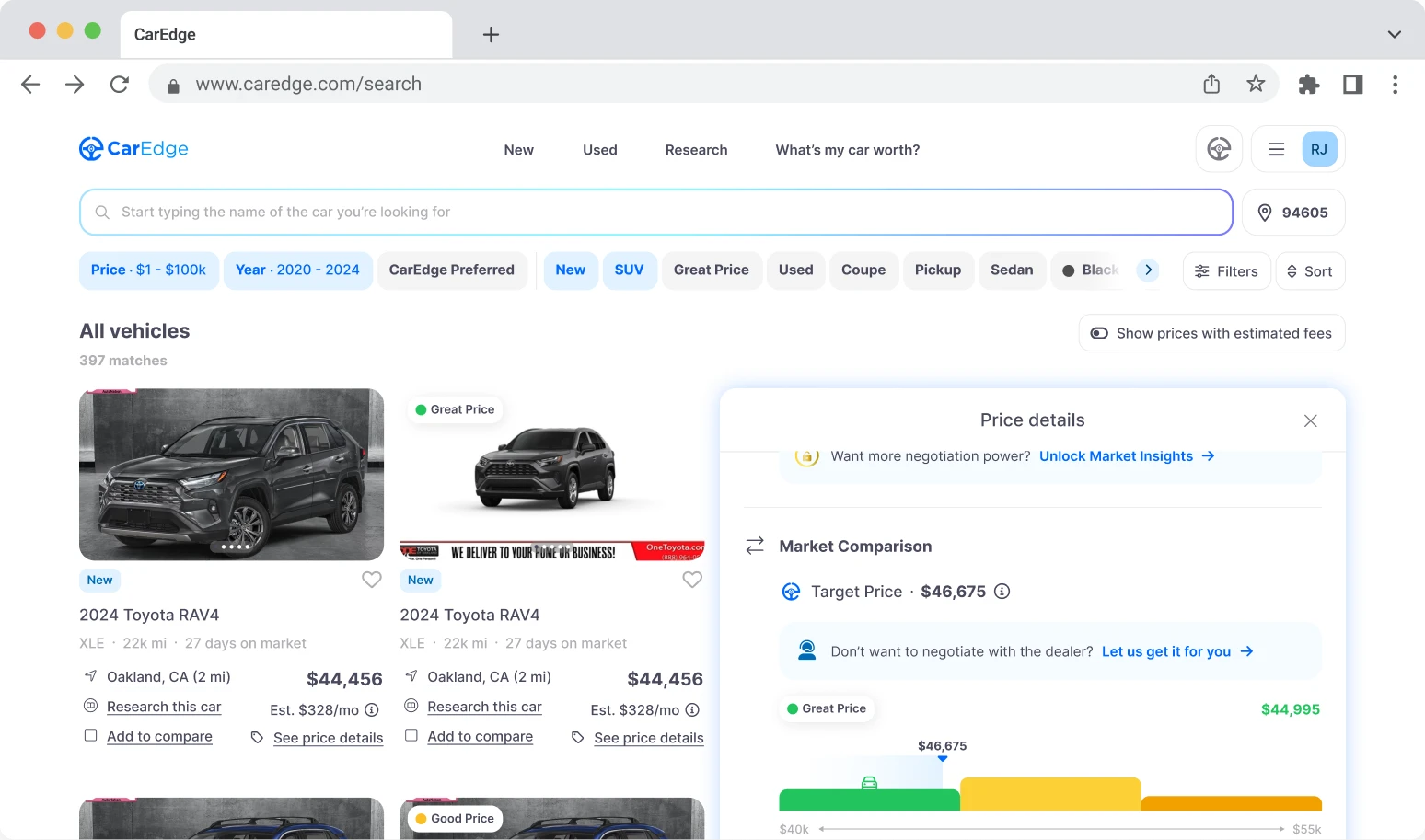

Help us personalize your CarEdge experience — it only takes a second.
Your answers help us personalize your CarEdge journey — we’ll follow up with tips and next steps that match your buying timeline.

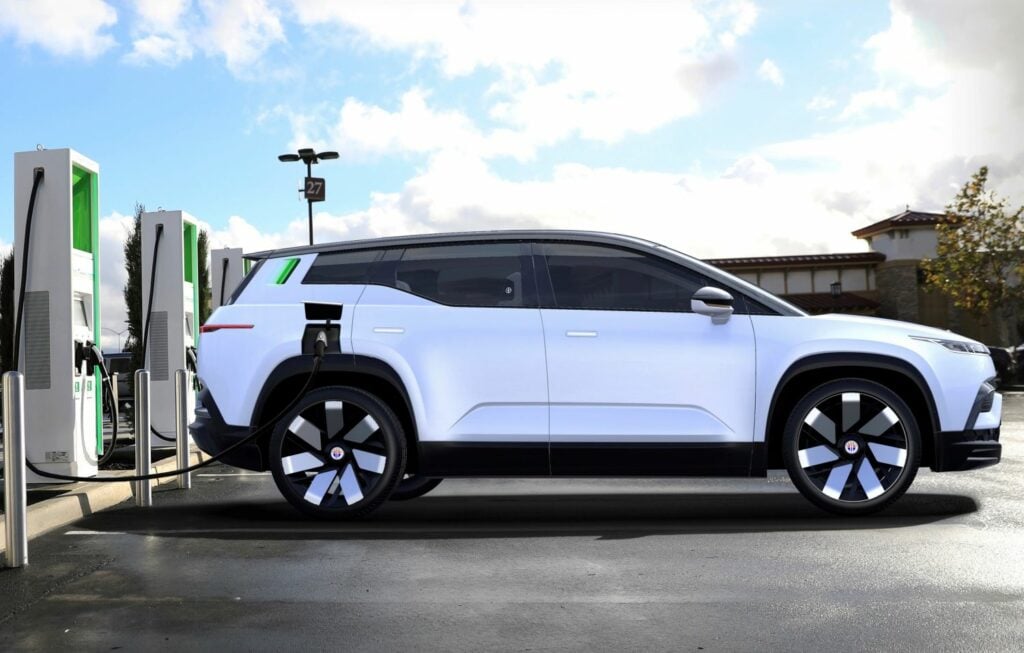
Sadly, these days it’s not possible to leisurely head to a dealership and pick out the perfect vehicle. Inventory remains at record lows, and supply chain shortages are going to get worse before they get better. The electric lifestyle is an adjustment for most first-time EV buyers, and preparation eases the transition considerably. You don’t want your new car honeymoon to be ruined by missed opportunities or misconceptions. Here are five reasons why you should plan ahead before making your first electric car purchase.
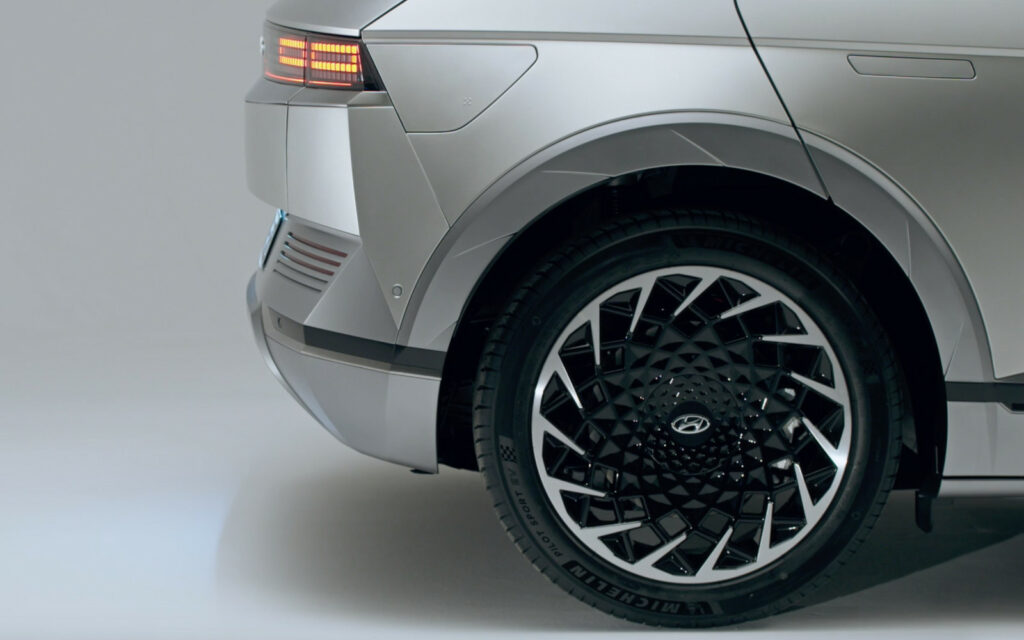
Inventory is slim to none for all new autos, and electric vehicles have been hit especially hard by the supply shortages of 2021 and 2022. EVs are the product of truly global supply chains, and that makes them particularly vulnerable to disruptions. EV leader Tesla has so far avoided the worst of the supply shortages, however high demand has new orders seeing delivery dates over 8 months away.
Tesla isn’t the only automaker seeing serious delays. The popular Volkswagen ID.4, Ford Mustang Mach-E and Hyundai IONIQ 5 are all hard to find on a dealer lot nationwide. Data from Cox Automotive shows that day’s supply, the preferred industry metric for new car availability, is dismal for several electric vehicle makers.
Here’s the day’s supply for popular brands that sell electric cars in America. Tesla, Rivian and Lucid sell directly to consumers, so there is no available data for their models.
As bad as these supply estimates are, many shoppers note that many dealers have just a few cars on the lot. Don’t expect to find exactly what you want at your local dealership.
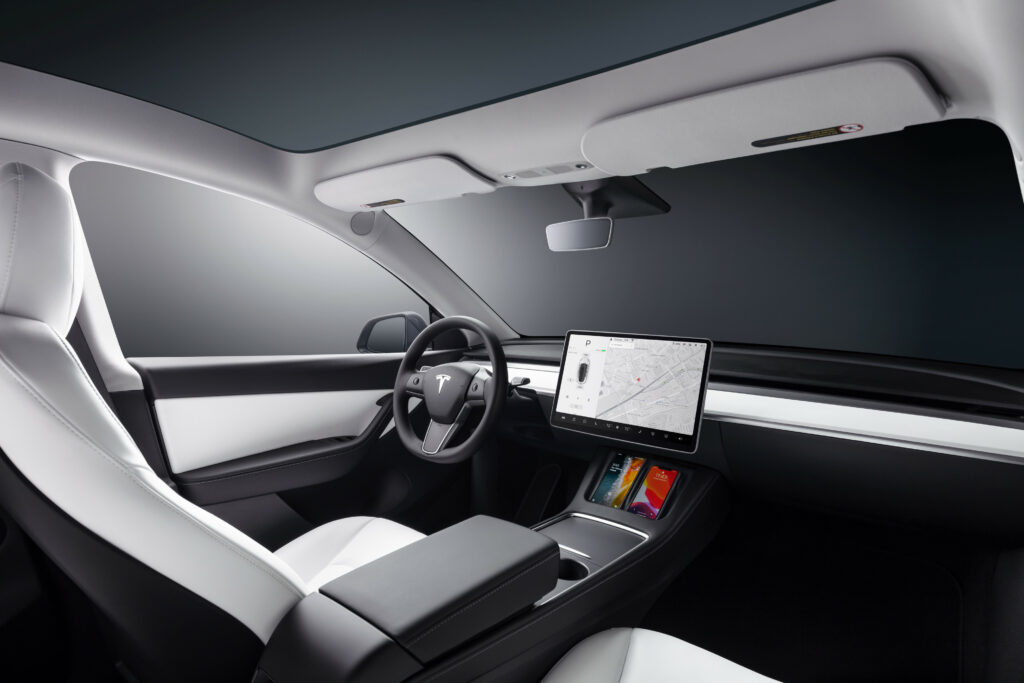
If you’re eager to get yourself into a new car as soon as possible, check out CarEdge Car Search to locate electric cars around the country. Beware misleading postings from dealerships. I’ve found that about half of dealer postings are actually misrepresenting cars that are already spoken for.
It’s not fun, but it’s worth it to call around. Soon, you may find yourself forgetting which dealers you’ve contacted, so it’s wise to keep a spreadsheet of who you’ve reached out to, and their inventory situation. While you’re at it, keep track of what their dealer markups are for EVs. Some dealers are taking advantage of the situation and charging $5,000, $10,000 or even $20,000 over MSRP.
If you don’t find what you’re looking for at a competitive price point, most automakers let you place an order for their popular EVs. Sometimes, you’ll have to order through a dealership, so keep that in mind if you don’t see a way to place an order on the automaker’s website. For example, the Hyundai IONIQ 5 and Cadillac Lyriq can only be ordered through a participating dealer.
If you have your eyes set on a Tesla, placing an order is simple. In fact, it takes just a few minutes (but requires a non-refundable deposit). However, demand far exceeds supply for Tesla models. Expect to wait 6-10 months for a Model Y.
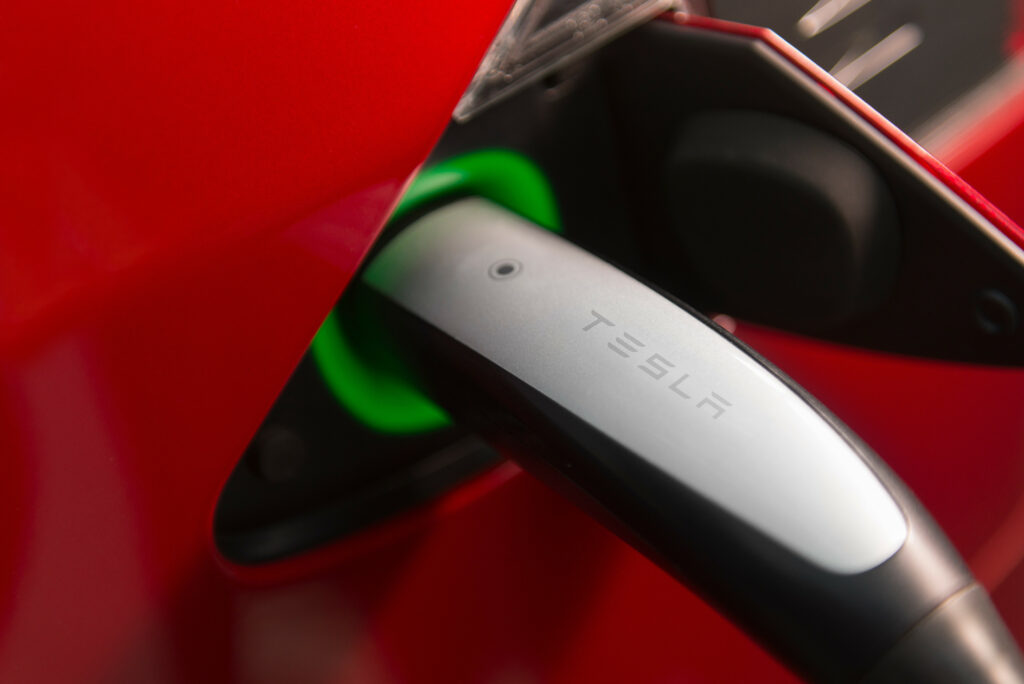
If you drive less than 30 miles a day and live near public fast chargers, don’t sweat it. However, long distance commuters and rural EV owners will be glad they thought about how to meet their charging needs.
Over 80% of electric car charging is done at home at affordable residential electricity rates, costing less than $15 for a full charge. If you skip any special home charger installation, plugging in to a typical wall socket will add two to four miles of range per hour. Over 12 hours (at night, for example), a standard wall outlet will add about 25 to 50 miles of range. However, frequent travelers will get tired of the slow charging speeds possible with basic 110-volt wall outlets.
For those who regularly drive more than 50 miles each day, it will likely be worth the investment to get a level 2 home charger installed. A level 2 charger increases power supply to 240 volts, and adds about 20 to 40 miles of range per hour. Unless you’re lucky enough to already have a 240-volt dryer outlet in your garage, installing a level 2 charger at home can cost between $700 and $1500, depending on labor costs and the condition of existing electrical infrastructure in the home.
We’ve covered all you need to know about how much it costs to charge an electric car in our CarEdge guide to charging.
At some point, a public DC fast charger will be essential for travels. If you purchase an electric vehicle with over 200 miles of range, getting to one shouldn’t be a problem. However, there continues to be wide variation in charge times, and that will make or break the EV ownership experience for frequent travelers.
The Hyundai IONIQ 5, Kia EV6 and Tesla models can all add about 200 miles of driving range in about 20 minutes. However, the 2023 Subaru Solterra EV takes 56 minutes to add the same range. Pay attention to the details, and consider how each electric model would fit into your lifestyle and needs.
For many households, tax liability fluctuates from year to year. If you know when a particularly large tax bill will be due, it might be a great time to buy an electric vehicle. The current federal electric vehicle tax credit is worth up to $7,500, however tax filers who owe at least as much in annual tax liability will get the full benefit from the credit. For example, a family who has a federal tax liability of $5,500 will only be able to claim $5,500 of the EV tax credit. That’s why it makes sense to purchase an EV when tax liability is expected to be at least $7,500.
Plug-in hybrids qualify for between $2,500 and $7,500, depending on battery size.
The credit (non-refundable) remains in effect for all automakers who have yet to reach the law’s 200,000-vehicle limit. Tesla and General Motors have surpassed the limit, so buyers of the Bolt, Silverado EV, and Tesla models won’t benefit from this generous incentive unless Congress overhauls the law. Revisions to the EV tax credit are possible in 2022. Stay up to date with the latest EV tax credit developments here.
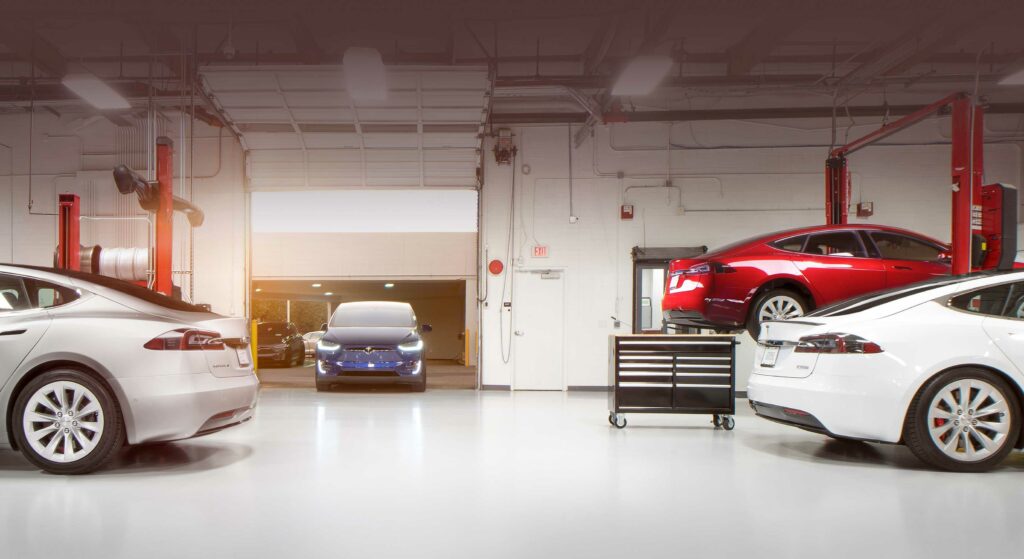
If you live anywhere near a major metropolitan area, especially along the coasts, you’ve got nothing to worry about. The rest of us need to bear in mind the limits of EV newcomers like Rivian, Lucid and Fisker when it comes to serviceability. Tesla now has 150 service centers across the country, but a few states remain without a Tesla service center. Fisker’s affordable Ocean electric SUV is loaded with impressive specs, however service centers will be few and far between for years to come.
This is where the strength of legacy automakers really stands out. A Tesla or Rivian service center will be hard to find in rural America, however legacy automakers have established dealer networks in every corner of the country.
Before you go out and buy an EV, have a plan for how and where you’ll get it serviced. Electric vehicles come with a great warranty, so you’ll definitely want a way to take advantage of it.
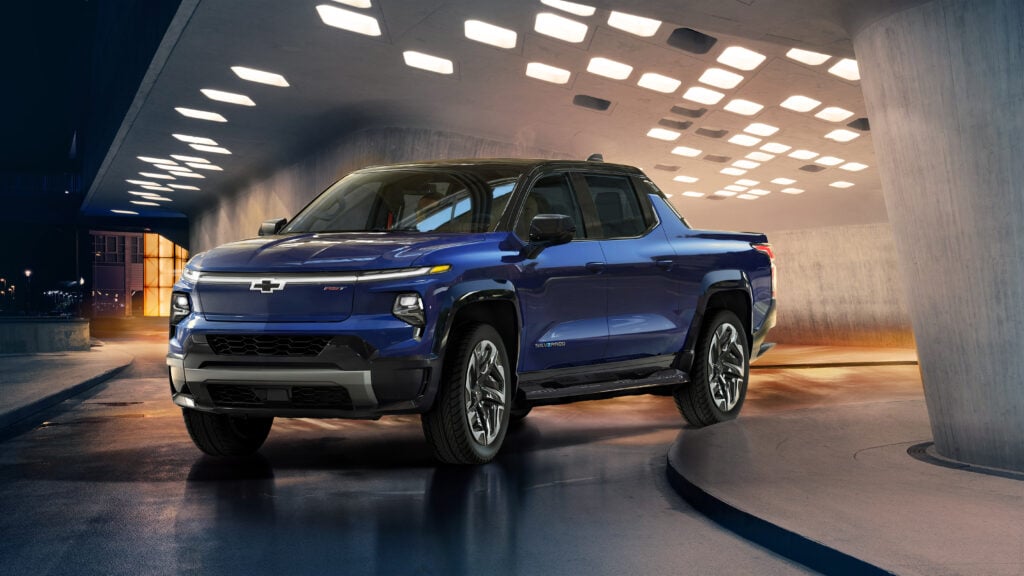
There’s always something bigger and better in the development pipeline. Newer models tout more range, faster charging and improved performance. On the other hand, prices tick upward with every added feature.
When does it make sense to hold out for the latest and greatest? It depends on what you value most, and which electric vehicle features you desire most. Looking to get more range out of a Volkswagen or Hyundai EV? 2023 models get a slight bump. Craving faster charging? Waiting a year might save you five minutes per charge. Don’t expect huge changes from one year to the next. Automakers have set the expectation for incremental improvements.
Ultimately, it will be up to you to decide what’s worth the wait, and when it makes sense to buy (or lease) an electric car.
Planning ahead for your electric car purchase not only has the potential to save you money, it also makes the transition to the electric lifestyle a lot easier. It’s important to consider your household’s unique needs and wants as you shop around. In 2022, EVs represent past, present and leading-edge technologies at a wide range of price points. Here at CarEdge, we’re keeping track of EV availability in 2022.
As always, CarEdge Electric is here to empower you with the knowledge to approach car ownership with confidence. Our weekly EV newsletter is full of helpful tips, the latest EV news, and new car reviews. Consider becoming a member for expert insights and one-on-one guidance throughout the car buying process.


The manufacturing of electric vehicles is a global process, with raw materials from every corner of the globe playing a vital role in battery chemistry. New forecasts from automotive energy analysts predict massive increases in electric vehicle production costs due to the entanglement of EV supply chains in the ongoing Russian invasion of Ukraine. The latest supply chain worries are on top of the ongoing chip shortage that threatens to stretch through 2022.
In 2021, fully-electric and plug-in hybrid passenger vehicles soared to 9% of global new vehicle market share. In Europe, EVs now make up 19% of all passenger vehicle sales. Even in the United States, electric car market share is approaching 5%. Although EV sales continue to be subdued by supply shortages and lack of inventory, most automakers remain on a path towards 100% electrified sales. However, getting there is easier said than done without the raw materials needed to make gigawatt-hours of batteries. There are dozens of EVs on sale in 2022, but finding one on a dealer lot is no easy task.
A new report by S&P Global Mobility highlights the unforeseen costs piling onto EV battery production because of the Russian invasion of Ukraine, and the resulting international sanctions. Building an electric car is about to get costlier, and buying one will get more expensive.
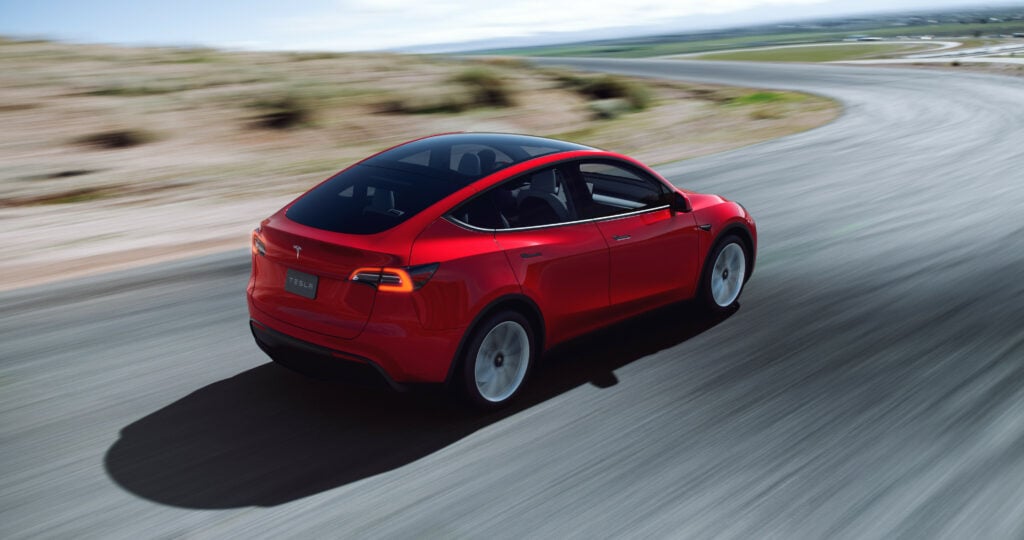
The analysts at S&P Global Mobility estimate that the best-selling Tesla Model Y could see input costs for battery raw materials surge by $8,000 per vehicle this year. Tesla recently increased Model Y prices for the tenth time in as many months to a base price of $62,990. Just a year ago, the same model listed for $49,990.
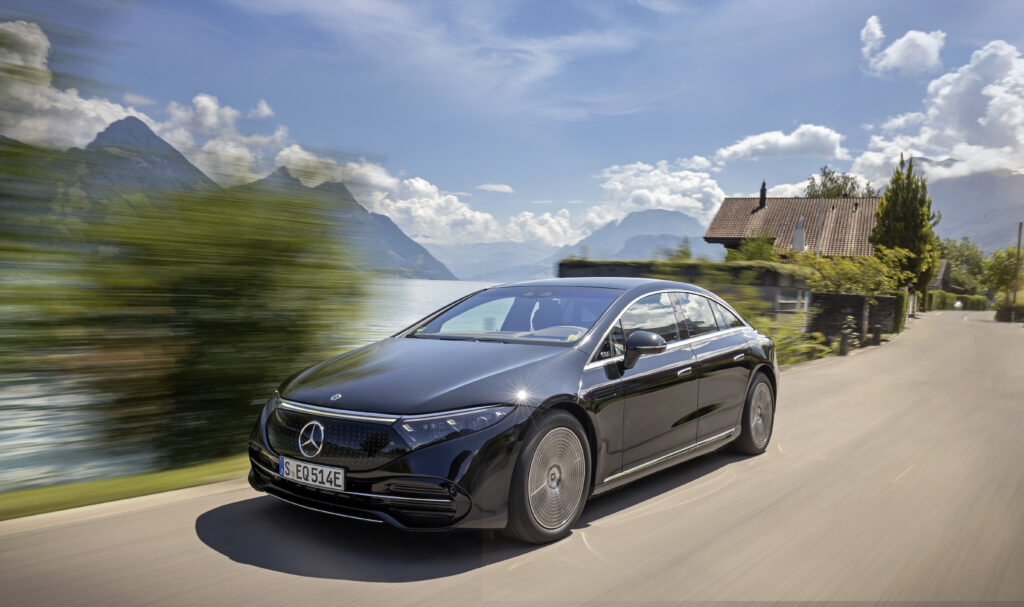
The same report forecasts that production costs for the popular Mercedes-Benz EQS could skyrocket by $11,000 year-over-year. The EQS luxury sedan already starts at an MSRP of $103,360, and climbs to $126,360 for the highest trim. With production costs eating into Mercedes’ margins, MSRPs are likely to climb higher any day now.
For years, EV advocates (and Elon Musk) have touted the importance of electric cars reaching cost parity with combustion-powered vehicles. It’s widely believed that when electric cars cost the same as an equivalent ICE car, the masses will rapidly transition to electric mobility.
The latest supply chain disruptions have analysts delaying the arrival of EV cost parity. In the months leading up to the war in Ukraine, raw materials needed for battery production were already becoming more costly. Cleantechnica reported back in November that lithium carbonate prices surged by 313%, cobalt hydroxide was up nearly 82%, and nickel sulfate rose by 34% over the course of 2021.
S&P Global Mobility said that Russia’s invasion of Ukraine is inflating raw material prices even further. Russia is the world’s third-largest supplier of nickel. German supplier BASF said it will not sign new agreements with Russian nickel suppliers because of the invasion. The analysts suspect that other manufacturers will take similar actions.
The latest data and expert analyses point towards a 5-10% increase in prices for most EV models in 2022. Tesla has already seen a 26% increase in prices since 2022, including steep price hikes in early 2022.
There are rumors that Hyundai may soon be raising MSRPs for the popular IONIQ 5, and Ford increased prices for the Mustang Mach-E by $1,000-$3,000 in February. When is the most affordable time to buy an electric car? If you’re set on buying an EV in 2022, make a purchase as soon as possible. Unfortunately, it looks like inventory and pricing are only going to get worse for the foreseeable future.
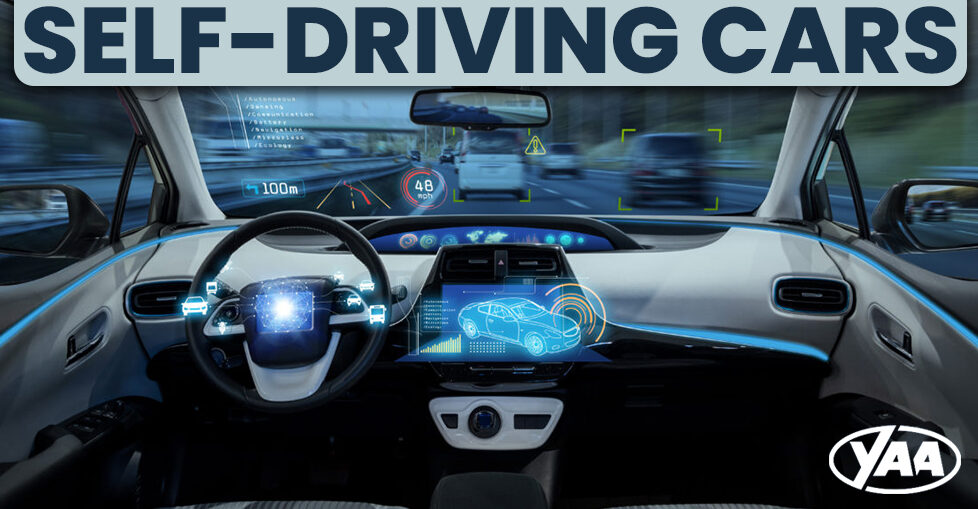
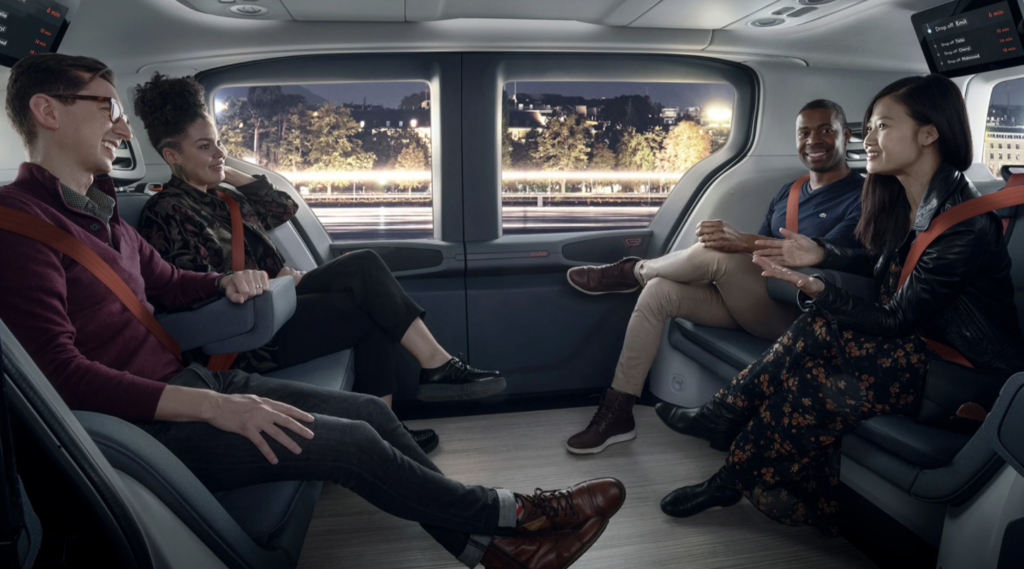
On March 10, 2022, the United States National Highway Traffic Safety Administration (NHTSA) announced safety standards for vehicles without human controls. The historic announcement effectively eliminates the requirement for human controls in future vehicles designed to be fully autonomous. In a few year’s time, cars without steering wheels may enter production.
“As the driver changes from a person to a machine in vehicles equipped with automated driving systems, the need to keep the humans safe remains the same and must be integrated from the beginning,” said Dr. Steven Cliff, NHTSA’s Deputy Administrator. “With this rule, we ensure that manufacturers put safety first.”
Before the NHTSA rule update, occupant protection standards were written for common, traditional vehicles. You know, the ones with steering wheels. The rule updates the standards to clarify what is required of manufacturers when applying the standards to vehicles without traditional manual controls.
In essence, the rule change permits vehicles to operate without driver controls, as long as automakers continue to provide the same high levels of occupant protection as current passenger vehicles.
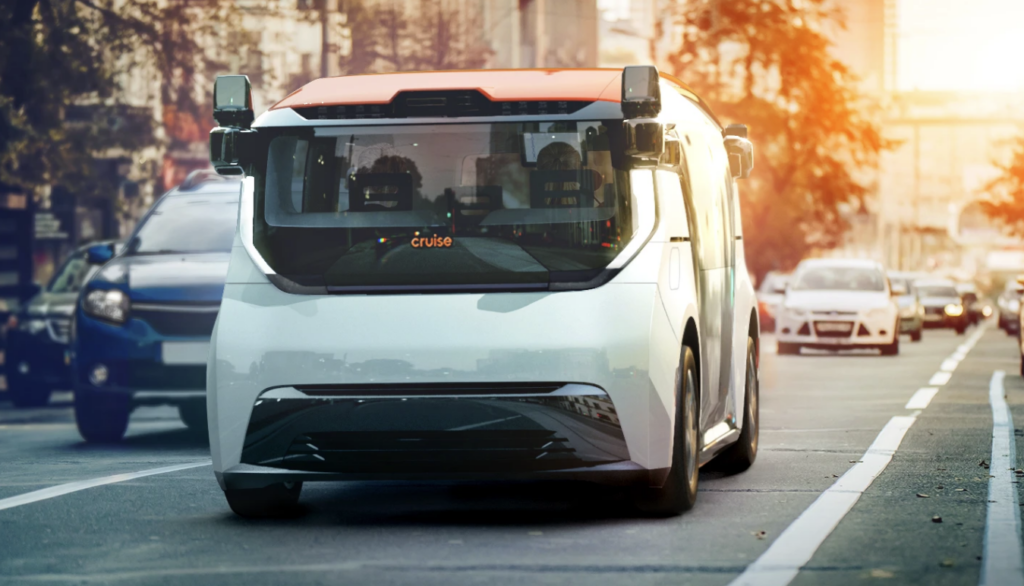
The NHTSA’s rule change comes in response to a petition from General Motors’ Cruise division to update the requirements for future self-driving vehicles. The new regulations eliminate the need for manual driving controls (a steering wheel and pedals) in fully-autonomous vehicles. This particular rule pertains to crash safety standards. No steering wheel, no problem.
In February, GM’s petition sought to make the case for NHTSA action.
“This petition both demonstrates how the Origin achieves safety objectives of existing standards, and helps enable future AV regulations. NHTSA has made clear in public testimony and regulatory actions, that in order to consider the development of AV standards, they first need more information from real world AV operations. We believe this petition can help enable that outcome: learnings from the Origin, which is designed to improve overall road safety, can help inform the creation of new, updated regulations and standards.”
GM’s Cruise recently unveiled the Cruise Origin, a purpose-built autonomous pod designed for urban mobility. The Cruise Origin and other autonomous vehicles in development needed the NHTSA to update the rules before embarking on the final stages of development. In fact, most automakers are working on autonomous driving technologies.
At least one automaker has refrained from bringing its level 3 autonomy to the United States because of outdated regulations. In 2021, Mercedes-Benz became the first automaker to get regulatory approval for level 3 autonomous driving on European public roads. For now, Mercedes Drive Pilot is available on 8,197 miles of German highways at speeds up to 37 miles per hour. What makes Mercedes Drive Pilot so special is that it is the first approved consumer-ready system to permit the driver to take their attention away from the road while the vehicle is in motion.
Mercedes-Benz cited the murky regulatory environment in America as reason for the delayed rollout of Mercedes Drive Pilot in the US. Now, Mercedes says it intends to bring level 3 Drive Pilot to American roads later in 2022. The S-Class and all-electric Mercedes EQS are the first models to gain Mercedes Drive Pilot in the US.
BMW also hopes to launch Level 3 features on the 7 Series sedan this year.
See every automaker’s plan for autonomous driving here.

Elon Musk was an early proponent of building cars without driver controls. The updated US regulations will open the pathway for Tesla’s without steering wheels. However engineering autonomy has proven to be a greater challenge than anticipated.
Tesla CEO Elon Musk reflected on the complexity of autonomous driving in a recent interview. “I thought the self-driving problem would be hard, but it’s harder than I thought. I thought it would be very hard, but it was even harder than that.”
That isn’t to say that Tesla is giving up. Tesla remains a leader in automation. The controversially-named ‘Full Self-Driving’ feature is currently available to beta testers with high safety scores. However, criticism abounds from customers who are upset over years of delays for a feature they paid $6,000 to $12,000 for.
Tesla’s vertical integration is one of its greatest strengths. Tesla controls the hardware and software in its cars that will one day support autonomous driving. Little by little, they are making steps in that direction. In 2021, Tesla even eliminated the gear selector in the refreshed Tesla Model S. Apparently, the car should ‘know’ which direction it needs to go. Tesla’s engineers think that today’s Teslas are capable of figuring that out. There are gear selector controls on the touch screen in case the car guesses wrong.
Still, the 2022 update to NHTSA regulations paves the way for Tesla, GM, Mercedes and other automakers to make their autonomous dreams a reality. If only they can figure out how to get it to work. I don’t expect to see a single production car without a steering wheel until closer to 2030. Commercial ride-sharing ventures like GM’s Cruise could, however, bring vehicles without driver controls to American roads within a few years.
Here Is Every Automaker’s Plan for Autonomous Vehicles
What would it take for you to feel safe buying a vehicle without a steering wheel? Wouldn’t that take the fun out of driving? Perhaps folks like me will be in search of aftermarket steering wheel mods in a decade’s time.
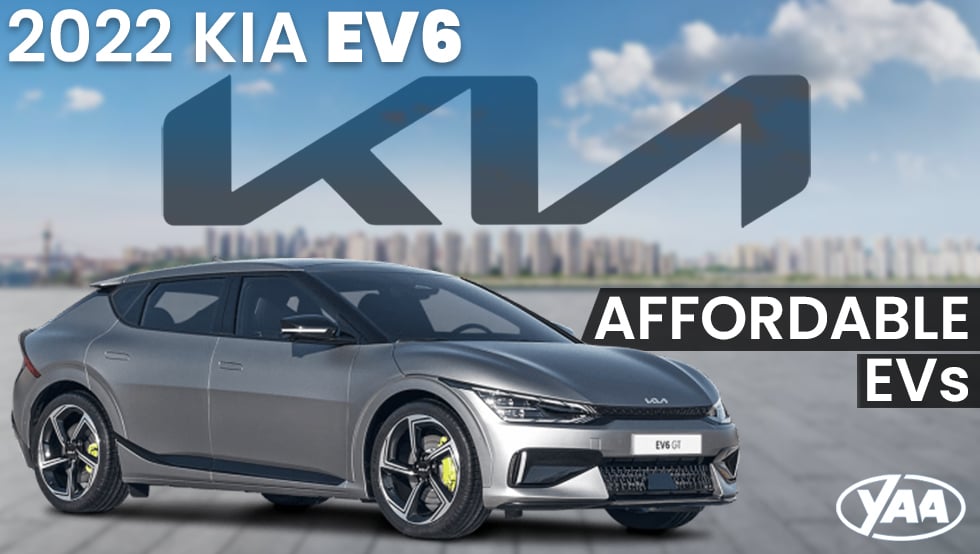
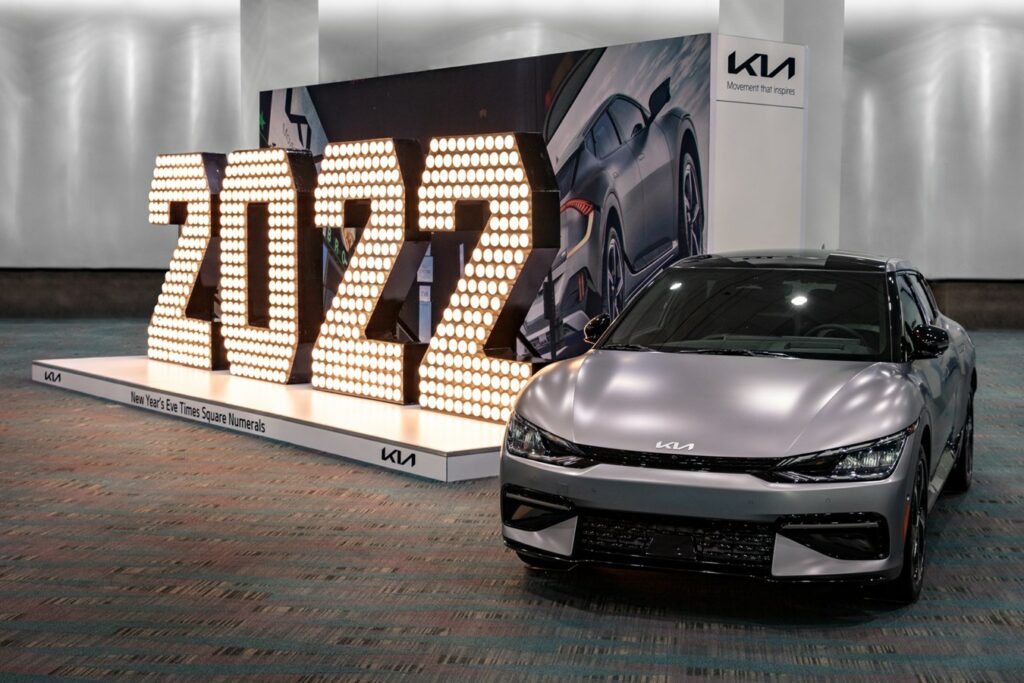
The average new vehicle sells for nearly $50,000, but not every vehicle costs the same to maintain and operate. Fuel economy, reliability, insurance, and maintenance needs are just some of the factors that determine the total cost of ownership for any vehicle. Automakers have made it clear that they’re bringing EVs to the masses, however cheap electric cars remain elusive.
Consumers in the market for an affordable vehicle in 2022 are presented with diverse options, including a larger selection of electric vehicles than ever before. EV‘s are no longer just for tech nerds. People who had never imagined themselves in an electric vehicle are making the switch simply for fuel savings.
However, it remains true that the majority of electric vehicles carry luxury price tags. It’s unlikely you’ll hear anyone say there are “cheap electric cars,” however there are affordable EVs. Here are five affordable electric vehicles that drivers love in 2022.
Starting at $40,760
240 – 260 miles of range
Learn more: CarEdge Review of the Volkswagen ID.4
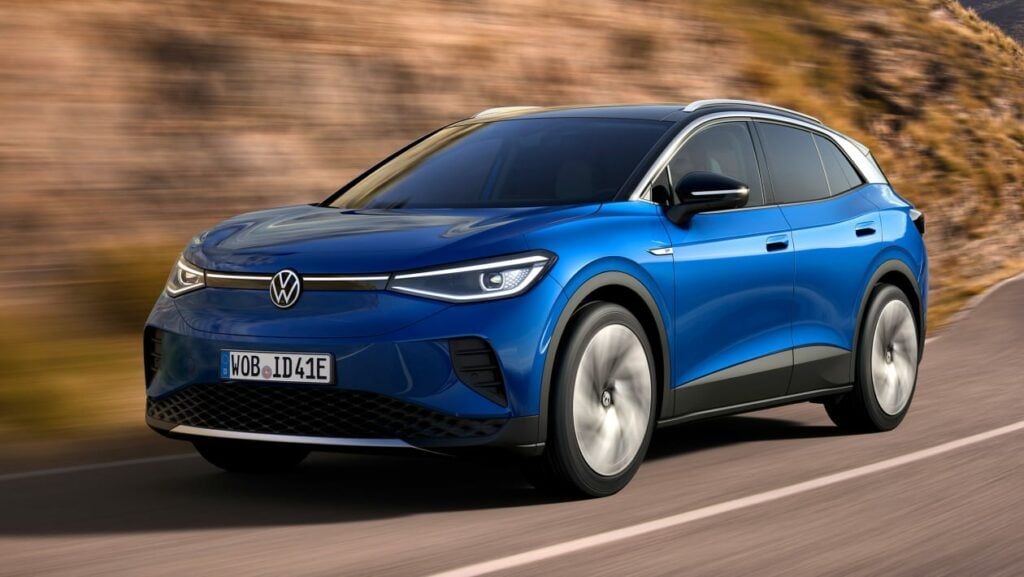
Pro:
Cons:
If you’re in the market for a great electric vehicle that will get you from A to B in comfort and confidence, the 2022 Volkswagen ID.4 should be on your short list. Capable performance, great safety ratings and a spacious cabin make the ID.4 a great place to be for the price point.
The 2022 ID.4 can go the distance, leaving range anxiety behind for the most part. Dozens of real-world range tests show that even on the highway at 70 mph, the ID.4 gets well over 200 miles on a charge. In city driving, closer to 300 miles is likely.
2022 updates are bringing bidirectional charging, plug-and-charge, increased range, quicker charging and major over-the-air updates to the ID.4. Even 2021 models will get new features via OTA updates this summer. Learn more about the game-changing capabilities of OTA updates here.
When it comes time to charge, you can either juice up at home overnight, or take advantage of 3 years of free Electrify America charging with unlimited miles. For frequent travelers, the Electrify America incentive can be worth a few thousand dollars. At a fast charger, charging to 80% takes about 30 minutes.
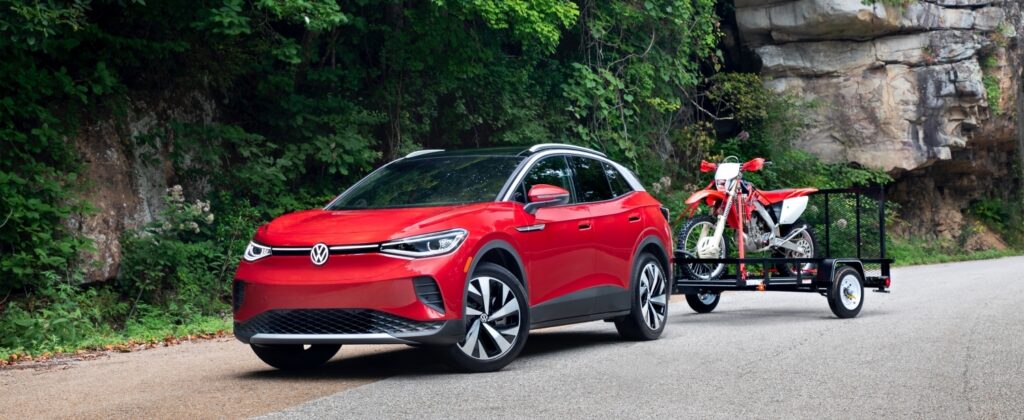
The all-wheel drive version of the ID.4 is where this crossover really shines. Adding another motor to the front axle increases horsepower to 295 with 339 lb-ft of torque and a very satisfying 0-60 time of just 5.4 seconds. However, it’s not quite a car you’d take to the track. The handling is well-tuned for attacking winding roads in inclement weather, although it maintains a more family-oriented demeanor.
The 2021 ID.4 earned a Top Safety Pick+ rating from the Insurance Institute for Highway Safety, and a five-star rating from the National Highway Traffic Safety Administration’s rigorous crash testing. CarEdge recently detailed all electric vehicle safety ratings in 2022.
The Volkswagen ID.4 is about as good as it gets for its use case. For the frugal-minded, It’s a particularly compelling car in the base Pro trim with rear-wheel drive (MSRP $40,760). Volkswagen’s EVs still qualify for the $7,500 federal EV tax credit in the US, which can turn the entry-level ID.4 into a $34,000 purchase. That’s an amazing value in today’s market.
Starting at $40,900
232 – 310 miles of range
Learn more: CarEdge Review of the Kia EV6
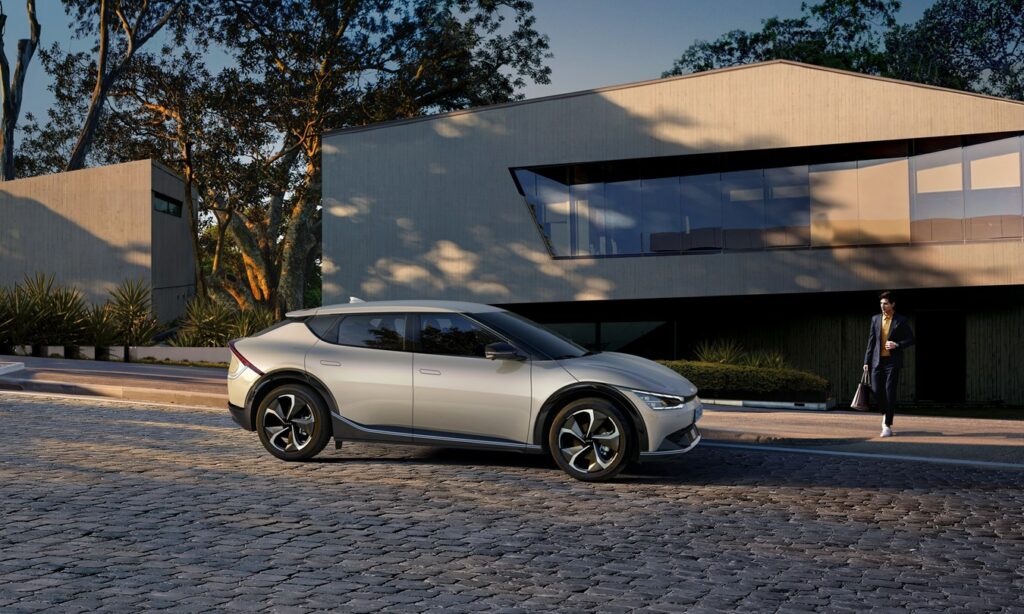
Pro:
Cons:
If you’re a techie who demands the latest and greatest that automakers have to offer, but don’t have the budget to buy an extravagant Lucid Air or Mercedes EQS, the Kia EV6 and its platform sibling the Hyundai IONIQ 5 just might be what you’re looking for.
Kia and Hyundai partnered up to engineer the new E-GMP battery and powertrain platform. The first two models to feature this advanced architecture are the Hyundai IONIQ 5 and the all-new Kia EV6. Both of these crossovers offer ultra-fast charging, impressive range, and over-the-air update capability for just over $40,000.
The 2022 Kia EV6 has a premium feel to it, and that’s something we’re still learning to expect from Kia. Aggressive looks on the outside are met with a welcoming, spacious interior. The cabin is open and airy.
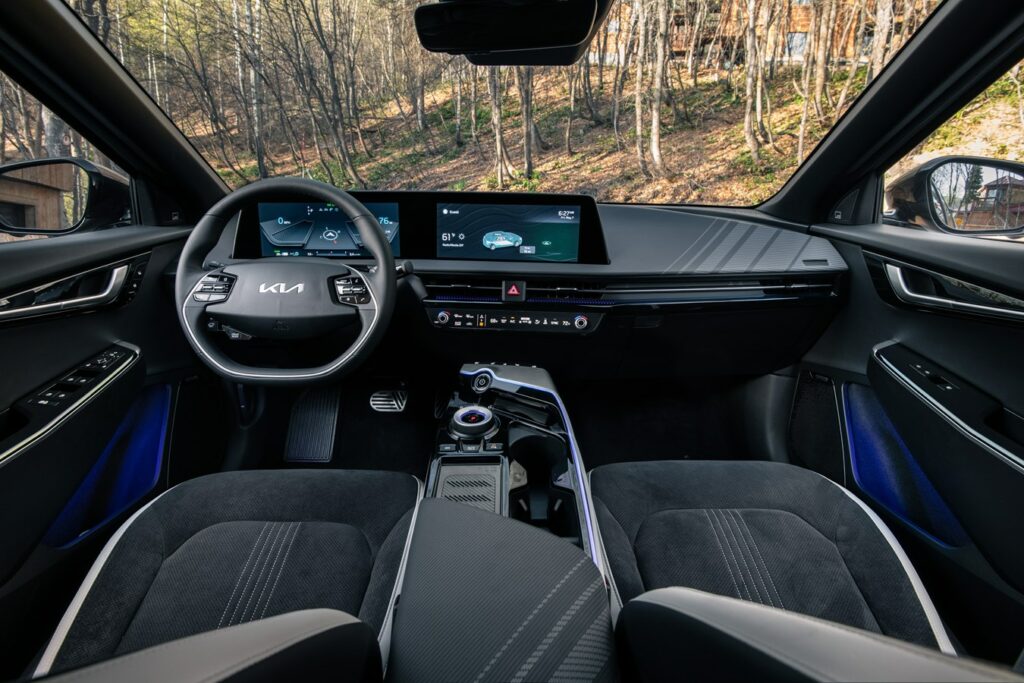
The EV6’s front dash consists of dual 12.3” screens, one for infotainment and another for the instrument cluster. Higher trims also include an augmented reality heads-up display that projects driving directions and basic info onto the windshield within the driver’s line of sight.
The Kia EV6 is no slouch; it can hustle with a heavy foot. All-wheel drive variants produce 313 hp and a 0-60 time of 5.1 seconds, but range drops to 274 miles on a charge. Longer range rear-wheel drive trims still reach 60 mph in just 7.3 seconds. For perspective, that’s about two seconds quicker than the popular Subaru Forester.
With a starting MSRP around $42,000 with destination, the 2022 EV6 represents incredible value for leading-edge tech. It even has faster charging and longer range than similarly priced Tesla models.
The greatest advantage the Kia EV6 has over any Tesla model is that the EV6 qualifies for the federal electric vehicle tax credit. Buyers can save up to $7,500 on their federal taxes if they purchase a Kia EV. Tesla and GM brands are no longer eligible since they’ve already sold greater than 200,000 electric cars.
If you’re a fan of the specs but not the aggressive looks, the Hyundai IONIQ 5 may be the perfect compromise.
Starting at $40,925
220 – 303 miles of range
Learn more: CarEdge Review of the Hyundai IONIQ 5
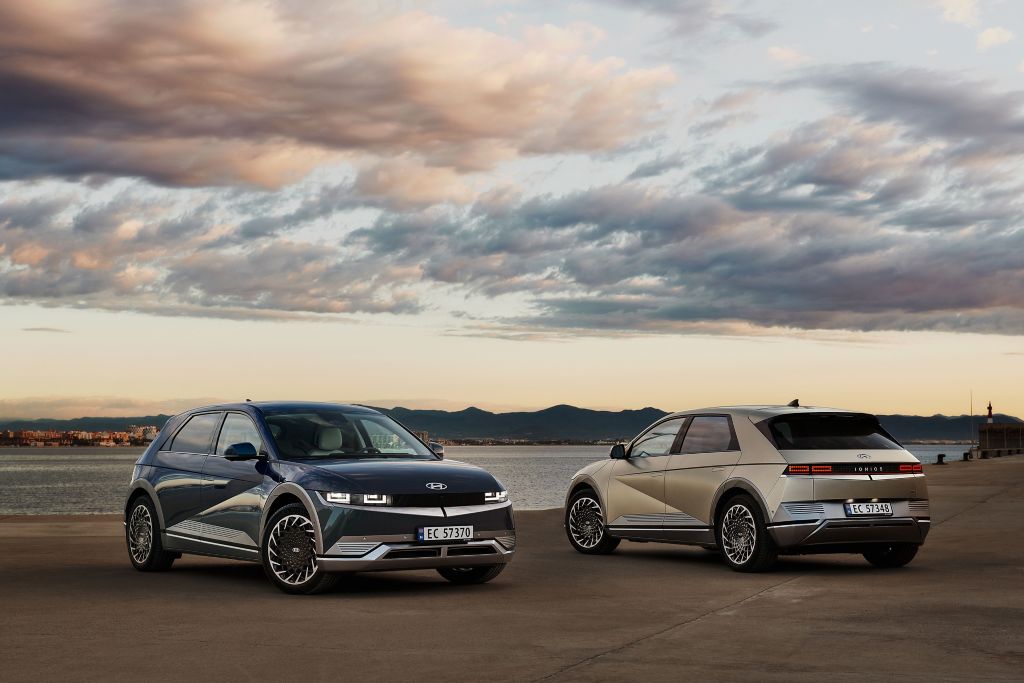
The IONIQ 5 made our CarEdge list of the 5 best cars to buy in 2022!
Pro:
Cons:
The all-new 2022 Hyundai IONIQ 5 is a uniquely retro electric crossover. You’re sure to get plenty of thumbs-ups at stoplights in this head-turner. It’s under $50,000, and surprisingly available at dealerships today. Hyundai says that the pixelated design draws inspiration from the first car they brought to America, the Hyundai Pony.
Also built on the new E-GMP platform, the Kia EV6’s sibling is as comfortable slamming into curves as it is cruising the interstate. The all-wheel drive variant is adequately powered with 320 horsepower and 446 lb-ft of torque. The AWD IONIQ 5 can get up and go with a 0-60 time of 5.2 seconds. That’s just a hair above the current electric crossover sales champion, the Tesla Model Y.
Range varies from 220 miles up to 303 miles depending on battery size and drivetrain. That’s slightly above average for a 2022 model. It’s important to note that some real-world highway range tests have struggled to get the IONIQ 5 past 200 miles on a charge.
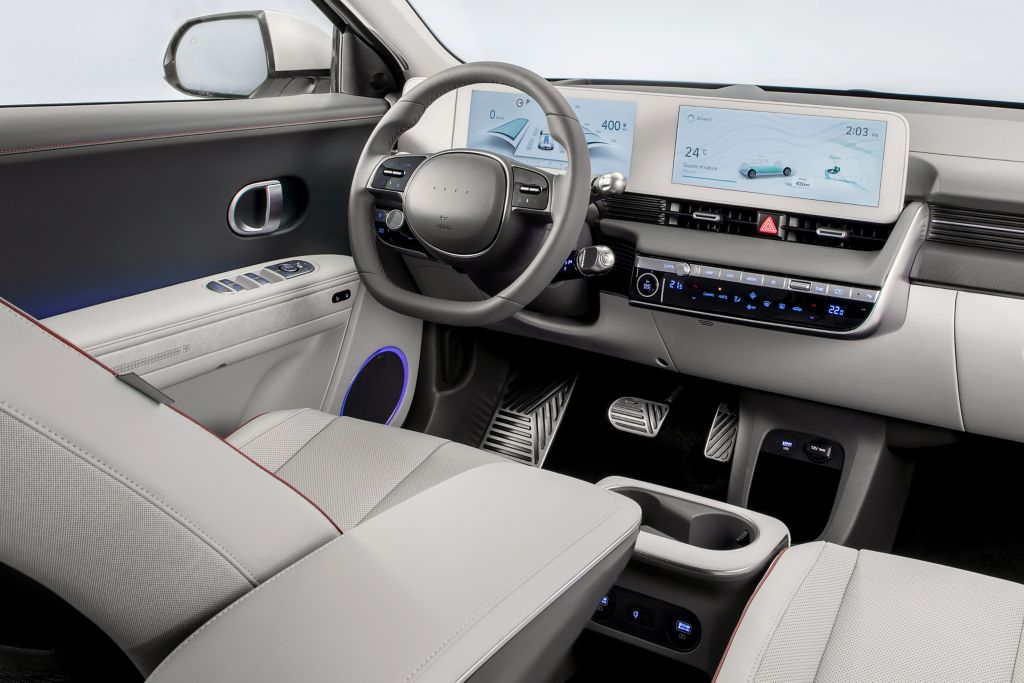
The IONIQ 5 does have one massive advantage over its competitors: charging speed. When you plug in at any Electrify America charging station, the IONIQ 5 can handle up to 230 kW charging speeds. Charging from 10% to 80% (adding 212 miles of range) takes just 18 minutes. The only other vehicle on the market capable of charging that fast is the $75,000+ Lucid Air luxury sedan. The IONIQ 5 has a major charging advantage over the ID.4 and Mustang Mach-E.
The IONIQ 5 is part crossover, part oversized hatchback. That’s not a bad thing. Somehow, Hyundai pulls off this delicate balance in all the right ways. The Ioniq 5’s interior volume (passenger and cargo combined) is 133.7 cubic feet, which is larger than the VW ID.4 and Ford Mustang Mach-E. The roominess has more in common with a Hyundai Santa Fe than a Kona.
Starting at just $40,925 for the 58 kWh smaller battery base model, the IONIQ 5 is available for thousands less than was expected. Most buyers will opt for the larger battery pack (77.4 kWh), which is comparable to other class competitors. With standard rear-wheel drive, the IONIQ 5 SE with the long range battery starts at $44,875. All-wheel drive is available for $3,500-3,900 more. The Limited trim starts at $51,825 and maxes out over $56,000 with all options included.
Starting at $44,990
272 miles of range
Learn more: CarEdge Review of the Tesla Model 3
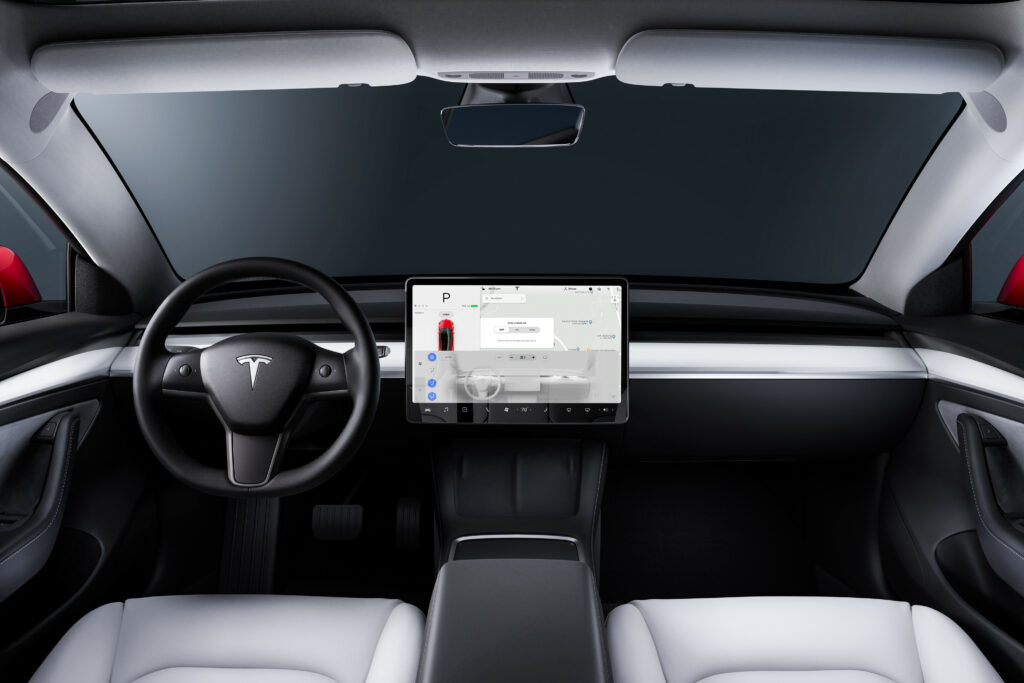
Pro:
Cons:
Say hello to the only Tesla available for less than $50,000. In reality, the 2022 Rear-Wheel Drive Model 3 is the same car as the ‘Standard Range Plus’ variant that the American automaker sold until 2021. Perhaps calling something ‘standard’ just wasn’t on-brand for the luxury automaker.
Don’t get your hopes up if you’re thinking you can get access to Tesla’s Full Self-Driving for under 50 grand. Tesla now charges $12,000 for FSD, which would bring the 2022 Rear-Wheel Drive Model 3 closer to $60,000 after taxes and fees.
Find out everything you need to know about self-driving cars in our CarEdge guide to autonomous vehicles.
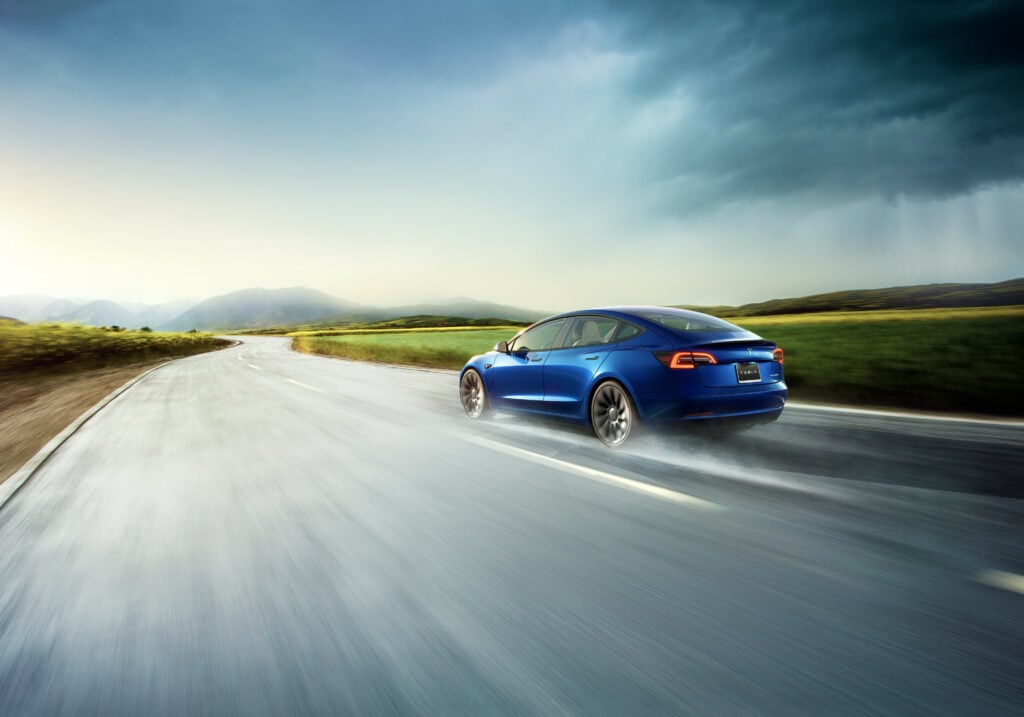
This base trim has received some 2022 upgrades, most notably an increase in range from 262 miles to 272 miles on a charge with the included 18” aero wheels. The 2022 Rear-Wheel Drive Model 3 features new lithium iron phosphate (LFP) batteries which will allow the car to repeatedly charge to 100% without risking as much harm to the life of the battery.
The Rear-Wheel Drive Model 3 is powered by a single electric motor that produces 296 hp and 277 pound-feet of torque. This sedan powers to 60 mph in just 5.8 seconds, not bad for a base trim.
At a Tesla Supercharger, its 60 kWh battery pack can accept up to 170 kW when nearly empty. In the real world, that means charging from 10-80% (adding 190 miles of range) takes about 26 minutes.
The 2022 Tesla Model 3 Rear-Wheel Drive now sells for a notoriously non-negotiable $44,990, plus the $1,200 destination and doc fee. So the cheapest Tesla is now $46,190. Just a year ago, it was $38,190.
Starting at $34,000
258 miles of range
Search hundreds of Hyundai Kona EVs for sale today at CarEdge Car Search!
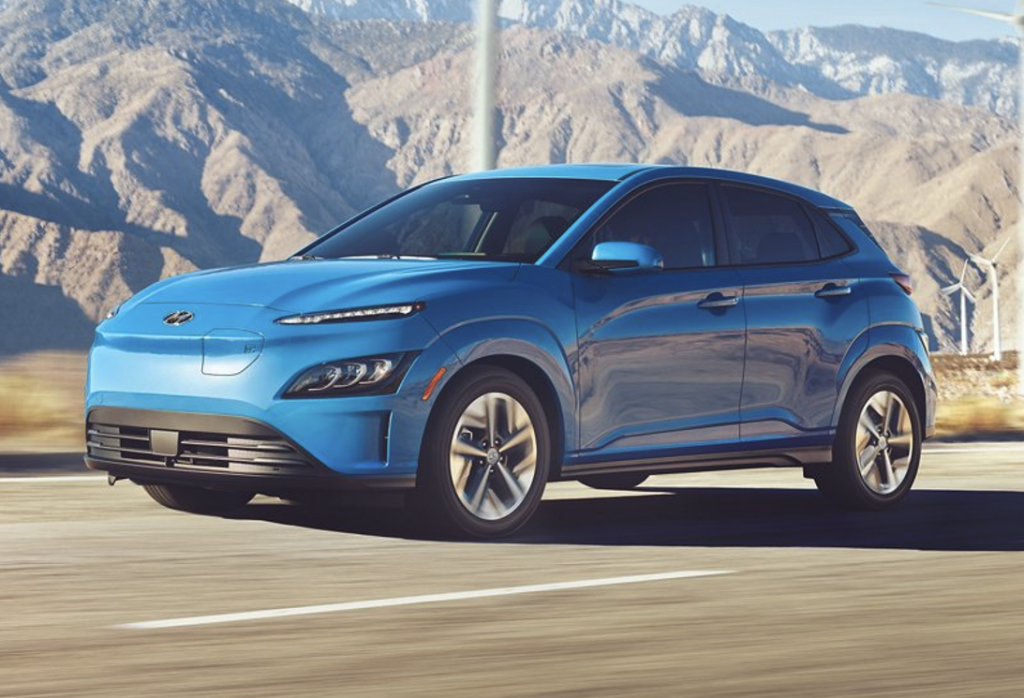
Pro:
Cons:
Hyundai’s forgotten electric vehicle should not be overlooked by those in search of a very affordable entry into electric mobility. The 2022 Hyundai Kona EV may not look all that attractive, but it has decent range and room to fit most lifestyles.
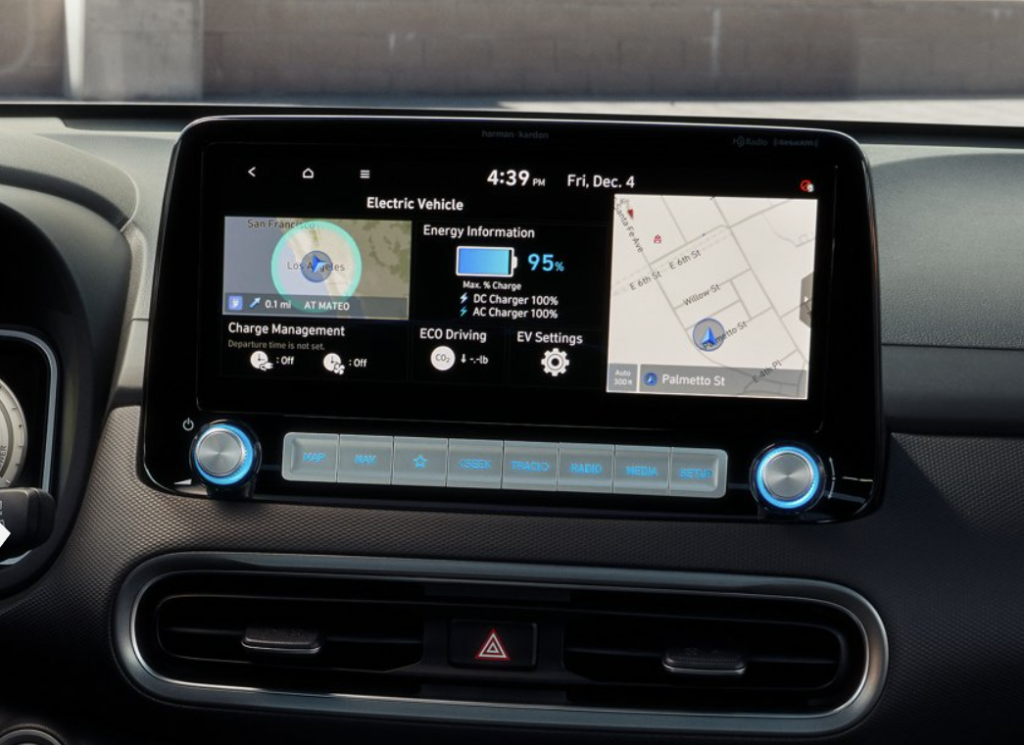
For just $34,000 before incentives, you can become the owner of the original Hyundai EV. This front-wheel drive subcompact crossover gets 258 miles on the charge, exceptional range for a budget EV. Some owners get over 275 miles on a single charge. The Limited trim, top-of-the-line option comes in at $42,500.
If you plug in at home, charging to 100% from a 240-volt dryer outlet will only take you about 9 hours from 10% state of charge. That will get you a full battery overnight while you’re sleeping. At a DC fast charger, the Kona is behind the competition. In 47 minutes, the Kona Electric charges from 10% to 80% capacity.
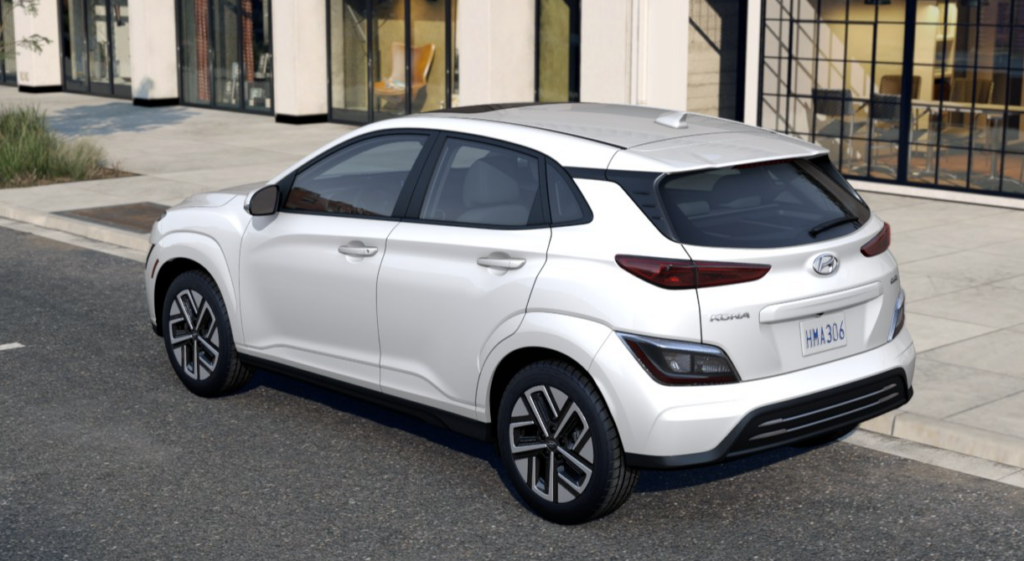
If you’re more of a Kia lover, we have great news. The Kia e-Niro is basically the Kona Electric with a Kia face.
Due to the Kona Electric’s charging faults, this would not be a great road-tripping vehicle. But if you’re looking for cheap electric cars perfect for zipping around town, this is a great deal not to be overlooked.
Available in 2023, but you can reserve one now.
Learn More: CarEdge review of the Fisker Ocean
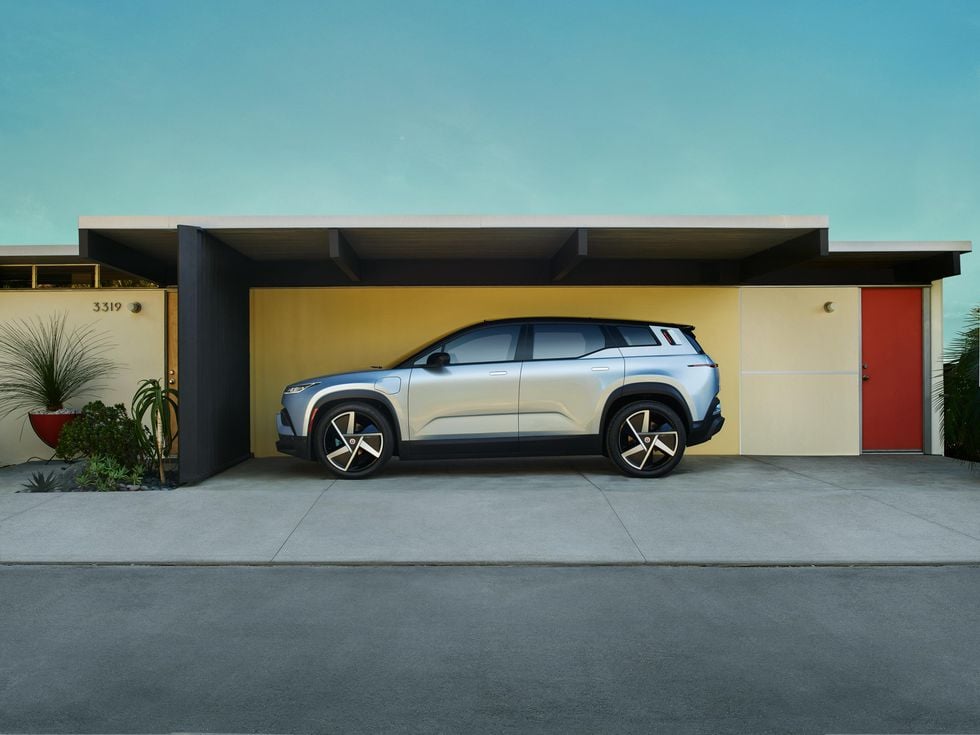
The Fisker Ocean sure does promise a lot. Will it deliver? At just $37,000, Fisker’s all-electric brand quotes 250 miles of range for the entry-level Fisker Ocean crossover. The 2023 Fisker Ocean didn’t make our official list for a few reasons. It hasn’t been produced yet, and delays have pushed the start of production back to November 2022. Fisker says they have 32,000 reservations in the books, so if you’re looking to buy one, it may not be possible until mid-2023. Furthermore, the more capable and sporty Fisker Ocean trims start at $50,000.
You may be wondering where the Chevrolet Bolt and Nissan Leaf are on this list of cheap electric cars. The Leaf is one of the originators of the EV segment, having started it all back in 2011. However, Nissan has regrettably not invested in range or battery performance upgrades over the years. It’s failing to keep up with the growing competition.
The 2022 Nissan Leaf S gets just 149 miles of range and charges quite slowly at between 50 and 100 kilowatts at a fast charger. It is the MOST affordable electric vehicle, with prices ranging from $27,400 to $37,400, however we can’t recommend an EV that leaves the lot at a disadvantage. As electric vehicles come to market with 250 to 400 mile ranges, how will the Leaf retain any resale value?
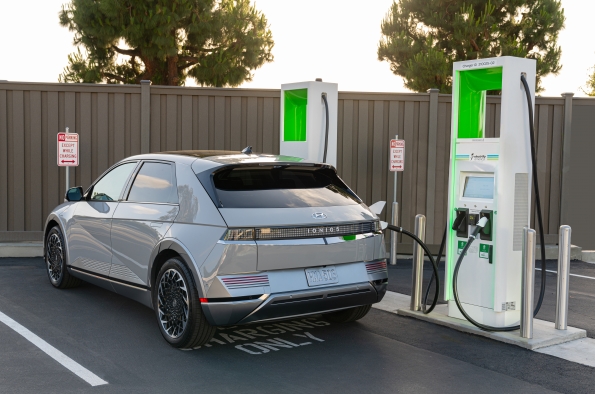
And then there’s the Chevrolet Bolt. It’s affordable and even looks okay with the recent facelift. While it’s true that the recall fix is giving Bolts brand-new, modernized battery packs, the reliability of the Bolt has taken such a hit that it’s too great of a financial risk for today’s consumers to get behind the wheel worry-free. You don’t want your $31,000 purchase to be a symbol of unprecedented fire risk. What would it take to change my mind? At this point, a few years of problem-free driving. Until then stay away from the Chevrolet Bolt. As you can see, there are plenty of other affordable electric vehicles out there in 2022.
Follow the money. Automakers are going all-in on electric vehicles in 2022 and beyond. The consumer benefits as competition rises, so perhaps affordable EVs are here to stay. If you’re looking to go electric in 2022, you don’t have to buy a Tesla, Nissan Leaf or Chevy Bolt. Every automaker is racing to become the next big thing in the world of EVs.
Some parting advice: consider all options, and test drive as many electric vehicles as you can. You’ll be amazed at what’s out there, and even more amazed at what’s to come.


What does 2022 have in common with the 1939 World’s Fair? It’s the feeling that autonomous vehicles are right around the corner. Nearly every automaker, from Tesla to Ford, has overpromised and underdelivered on their plans for autonomous driving. Tesla CEO Elon Musk said it himself recently in an interview with researcher Lex Fridman. “I thought the self-driving problem would be hard, but it’s harder than I thought. I thought it would be very hard, but it was even harder than that,” Musk reflected. He’s not the only one to misjudge the enormity of the task at hand. You’d think automakers would stop giving themselves deadlines that are destined for letdowns.
It turns out that there’s been one overarching theme in the learnings from the past decade of development. Engineers now see that in order for self-driving cars to be safe and successful, cars will have to learn to think like a human. Computers are exceedingly good at performing repetitive tasks. What they’re not great at is responding to unique situations full of unknowns. The human brain is more capable than some give it credit for. We’re very good at dealing with unknowns and making complex decisions on the fly.
After reading this article, you’ll better understand what self driving cars are, the difference between self-driving cars and autonomous vehicles, and the terms and jargon associated with self-driving cars. Let’s dive in.

As you’re soon about to learn, the world of autonomous cars and self-driving technology is full of terms worth defining. For starters, what is self-driving in the world of transportation? Self-driving cars can drive in some or even all situations without driver input, but a human must always be ready to take control. Think of them as a crucial stepping stone on the path to full autonomy.
Self-driving cars are not fully autonomous. In the world of professional engineering, ‘automation’ is the preferred term for the sliding scale of vehicle operation status. In fact, the United States National Highway Traffic Safety Administration (NHTSA) refrains from using the term “self-driving” at all, and most engineers disagree with the use of the term. Let’s dive into the terms and definitions that relate to so-called self-driving cars, and the future of automation as a whole.
First, let’s clear the confusion. Talking about automated cars warrants a glossary of its own. Being well-informed is the key to knowledge, and we all know knowledge is power. Here’s a list of the terminology you’re likely to encounter in a self-driving world. In most cases, the difference is in the finest of details.
These are technological features designed to improve driving safety. These software-based systems improve a driver’s ability to react to adverse situations on the road. Examples include adaptive cruise control, forward collision warning and lane departure warning. ADAS features are very common in newer car models.
This term is thrown around a lot, but a true autonomous vehicle is capable of sensing its environment and operating without human involvement. Human passengers can take their eyes off the road and just enjoy the ride. Imagine entering the destination address, and that’s it. Autonomous vehicles can do everything that an attentive human driver can do.
Usually referring to Tesla Autopilot, which is a suite of ADAS features that enable the vehicle to steer within a lane and adjust speed in response to surrounding traffic. It’s essentially adaptive cruise control plus lane centering. Autopilot is standard on all new Tesla models.
Tesla “Full Self-Driving” in its current iteration is not much different from driver assistance technologies. Tesla enthusiasts, relax. That’s likely to change as Tesla updates the software regularly via over-the-air updates that simply require WiFi to install. Automotive engineers generally refrain from using this term altogether, as it’s more associated with marketing than with engineering automation. A true full self-driving car can navigate roads with human supervision. Tesla’s program is getting close, but as thousands of videos online will show you, Tesla FSD is not quite there yet. It is impressive though. Tesla FSD can be yours (someday) for an additional $12,000 when you buy a new Tesla vehicle.
This is when a vehicle’s operation is limited to a restricted geographic area. For example, Waymo’s driverless vehicles are geofenced to only operate in the Phoenix metropolitan area. Geofenced autonomous vehicles will grow in popularity before true, independent autonomous vehicles put rubber on public roads.
Light Detection and Ranging. LiDAR is the go-to ‘radar’ technology for nearly all self-driving innovators. Except of course for Tesla, who seems to think image processing with cameras is the way to go. LiDAR can ‘see’ through low visibility conditions, including fog and heavy rain.
When a vehicle can perform most driving tasks in a geofenced area, but with constant human monitoring and intervention when needed, some in the automotive industry consider it to be self-driving. The degree of human input varies. More on that below…
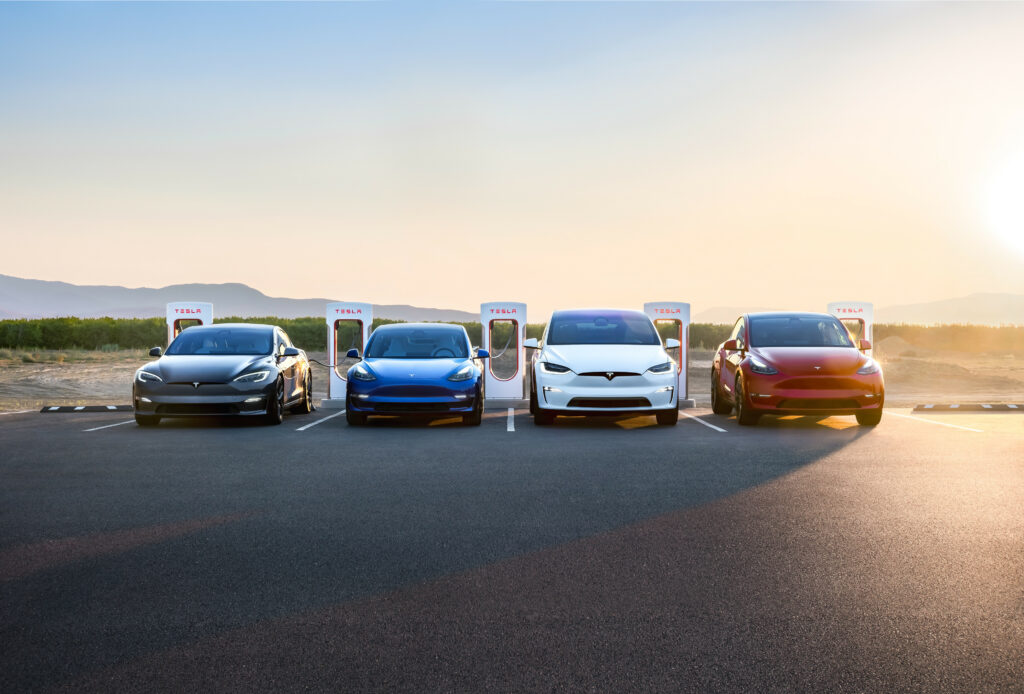
But wait, there’s more! Engineers rate the levels of automation based on how independently the system can perform tasks, and how much human input and supervision is required. Here are the basics of the five levels of automation, according to the Society of Automotive Engineers.
Now that we’ve covered the engineering and industry jargon, let’s revisit our definition.
What exactly is self-driving technology? The most agreeable definition is that self-driving cars fall within level 3 or level 4 automation, in which the vehicle can perform most driving tasks in a geofenced area, but with constant human monitoring and intervention when needed. Fully autonomous vehicles fall within the ultimate frontier of automotive engineering, Level 5. A true autonomous vehicle can operate from start to finish without driver input or attention. Imagine reading a book or taking a nap on your way to work.
No cars on today’s roads are capable of fully autonomous driving. Automated driving remains years away, however tremendous resources are committed to the cause of unraveling the ultimate challenge in automotive engineering. Tesla’s Autopilot and Full Self-Driving features are branded as Level 2 systems, which means that constant supervision is required, and intervention is to be expected. This discrepancy between the Level 2 classification of Tesla’s driver assistance systems and the names of the products remains the source of much controversy among engineers and driver safety advocates alike. Can’t we all agree that honest advertising is always in the interest of safety and responsibility?
Aside from automakers, there are dozens of other companies innovating in the autonomous driving space. Waymo, Argo AI and Cruise are all putting geofenced autonomous cars on the road today for real-world testing and limited customer use for ride-hailing. What is a self-driving car in 2022? It’s likely a prototype with limited use.
Tesla is the clear leader in advanced driver assistance systems. However, the extent of Tesla’s lead among industry competitors is not nearly as clear as it was a few years ago. Tesla has taken a bold step away from using radar for sensory inputs. The decision to remove LiDAR from new Tesla models starting in 2020 was so controversial that some senior engineers quit in protest.
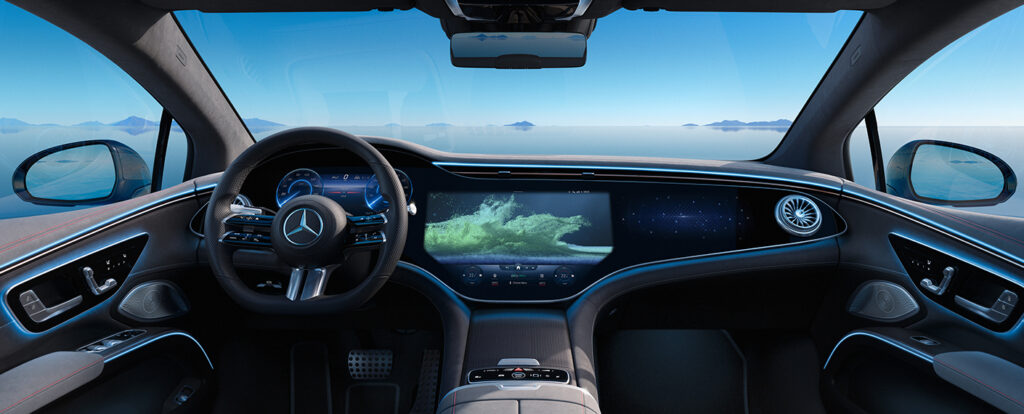
Remarkably, Tesla is no longer the only automaker breaking autonomy barriers. In 2021, Mercedes-Benz became the very first automaker to get regulatory approval for Level 3 autonomous driving on limited public roads. For now, Mercedes Drive Pilot is available on 8,197 miles of German highways at speeds up to 37 miles per hour. What makes Mercedes Drive Pilot so special is that it is the first approved consumer-ready system to permit the driver to take their attention away from the road while the vehicle is in motion. Even Tesla’s Full Self-Driving feature does not permit the driver to direct their attention elsewhere, despite evidence of the contrary on social media.
For the foreseeable future, American roads will see even more Level 2 driver assistance systems calculating their way through traffic as nearly every automaker in the market steps up their autonomy game. Level 3 remains in development, even for Tesla. Mercedes has not announced if it will seek approval in the US anytime soon, likely due to the murky regulatory environment.
Fully automated driving is likely in our future, but no one knows when it will be safe and accessible to all. The pace of innovation ebbs and flows. Engineers, regulatory agencies and insurance companies have some hard problems to solve. For now, proceed with caution when at the wheel of a “self-driving” vehicle. Their arrival is a great reason to look twice when crossing the street. You never know who (or what) might be coming around the corner.
CarEdge Just Launched a New Search Engine to Make Buying Your Next Car Easier!
We have thousands of vehicles listed today. Each listing includes industry insights, empowering data and the true TotalPrice that will make buying a car the transparent process it should’ve always been. We show you what dealers don’t want you to know. We believe that data can be your superpower when buying a car. Check it out here!